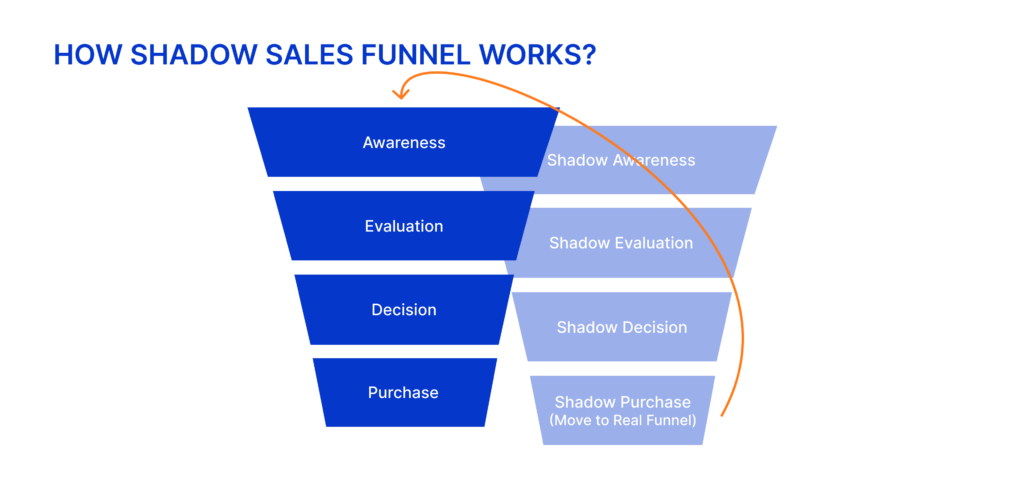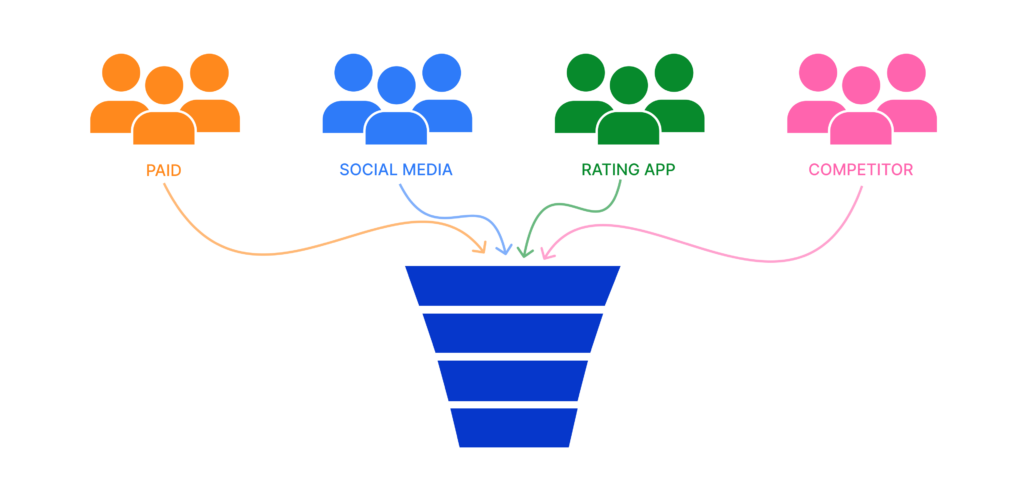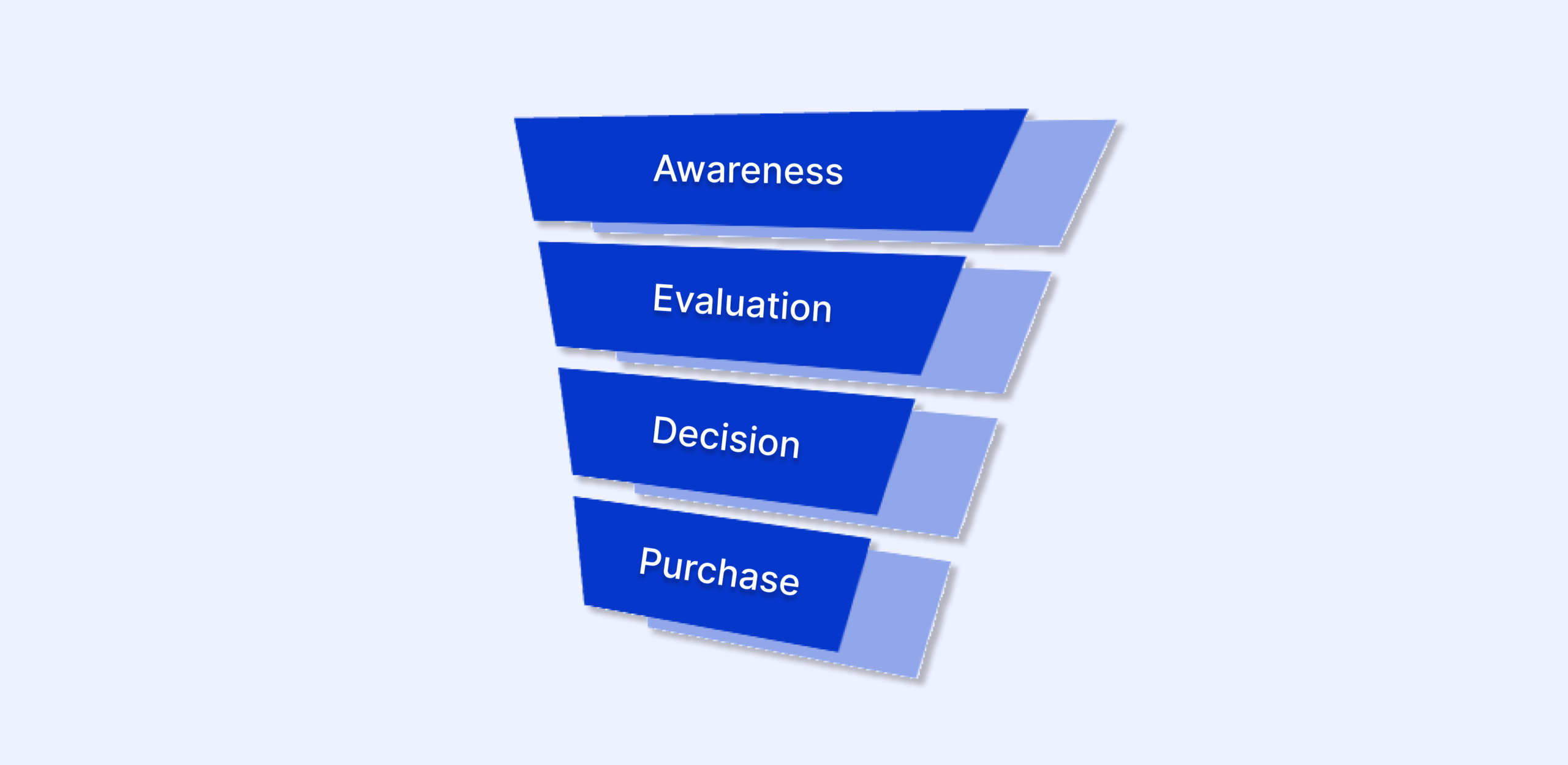Let’s assume that you have a long and well-managed funnel, a standard buyer journey, the right messaging, and the appropriate medium of lead entry.
This means the funnel is attracting prospects that are at least problem-aware, solution-aware, and product-aware.
This method of lead capture is effective, but the funnel leaks one important kind of potential buyer:
The one who is well aware of the product that is an answer to their problem, but not your product.
In this modernized realm of digital marketing and lead generation, powered by automation and AI tools like Zapier and webhooks, you can also trap leads that are exploring a solution to their problems, but haven’t interacted with your website or funnel yet.
How? Through a shadow funnel. Let’s dive in.
What is a Shadow Funnel?

Shadow funnel is a secondary funnel that captures leads based on their behavioral intent, firmographics, and product usage.
An Ideal Customer Profile (ICP) recently uninstalled your competitor’s product? That’s a lead.
An Ideal Customer Profile (ICP) checked out your competitor’s review on G2? That’s a lead.
We’ve evolved from the days of straightforward funnels that captured leads only when they interacted with the business’ ads, website, and social media pages.

The total addressable market (TAM) includes both market-qualified leads (MQLs)/product-qualified leads (PQLs) and semi-market-qualified leads (SMQLs). MQLs and PQLs are qualified prospects who have already engaged with you while SMQLs are interested in your solution but haven’t directly engaged with your product.
While your traditional sales funnel, AKA, the top funnel takes care of the MQLs, the shadow funnel is tasked with taking care of your SMQLs.
Why a Shadow Funnel?
There’s a common misunderstanding that leads can only come to your funnel through marketing campaigns.
Although they do, there’s so much more to the sales process than these “hot buyers” who slide right in. In fact, they hold only a small percentage of your potential customer base.
In reality, once your potential customers come across your business, they go ahead and do their own research about it.

Whether it is reading third-party rating pages, or checking out blogs or social media pages, these are “leads,” in a way that they do need the service you’re offering, but don’t find your brand credible (yet).
These kinds of stalking leads fall into a shadow sales funnel, which is a sales opportunity maximization measure that captures from far and wide sources.
Not using a shadow funnel is missing out on a goldmine of leads that are steps away from conversion, but would never fall into your original funnel.
Intent Data And Shadow Funnels
There are no hard and proven ways to build effective shadow funnels at the moment.
Since it’s an evolving area of lead capture, an innovative approach that marketers are applying is mapping intent data from buyer journeys.
Intent data empowers businesses to spot and target potential buyers through their online activities, interests, and primary attributes.
There are three main categories of intent data:
- Behavioral Intent: This category includes data from review sites that track user visits that are actively researching their industry, competitors, and specific products.
- Circumstantial: SaaS tools privy you to data about the installation and uninstalling of your competitor’s product. This opens up a window of opportunity for you to sweep in and nurture a market-ready and solution-aware crowd.
- Firmographics: Once you’re aware of your ICP, data enrichment tools allow you to target companies that fit the profile with a direct sales pitch.
How To Build A Shadow Funnel?
A Shadow Funnel is built in three steps, starting with the aggregation of data from the three touch points mentioned above.
Here’s how it unfolds:
Step 1: Mapping Intent Data
Mapping intent data to the standard buyer journey stages includes a thorough evaluation of the various levels at which your potential customer is operating.
The three primary stages include:
- Awareness of the industry
- Consideration of the product and vendors, excluding your brand
- Decision regarding specific vendors, not yours
Once the lead is spotted, it is distinguished in terms of its prediction data point, and its journey from high, medium, to low conversion.
Step 2: Emptying The Funnel
Every lead that is in the Total Addressable Market (TAM), but not in the primary funnel, falls into the shadow funnel. The objective of the shadow funnel is to treat leads and keep the funnel empty.
This quickness in lead treatment and nurturing comes in handy, as the goal of the shadow funnel is to accelerate sales conversion, capture email addresses, and refuel conversion campaigns.
Step 3: Moving Prospects to Real Sales Funnel
The final step of the funnel is focusing on bringing prospects home within the shadow funnel.
With proper automation in place, the prospects are moved from the “Shadow Aware” stage in which they are aware of the industry to the “Aware” stage, in which they become acquainted with your brand.
Similarly, prospects are at the “Shadow Decision” stage, in which they are thinking of tools that aren’t yours to transition to the “Decision” stage, which includes the decision to use your product or not.
By accurately pinpointing where their target audience is in the buyer journey, businesses can deliver highly targeted messaging to pull prospects from the Shadow Funnel into the active marketing funnel.
Using Behavior As Cue For Action
The evolving landscape of marketing demands meeting leads where they are – even if it is not your funnel. Leveraging intent data, mapping the buyer’s journey, and building Shadow Funnels are just a few examples of how businesses are adapting to reach their target audience with unprecedented accuracy and efficiency.
Identifying new leads in a saturated market is no child’s play. It involves penetrative messaging, the right combination of AI and automation tools, and a Shadow Funnel that compliments your primary funnel. By collecting historical data and building a model with the right intent data sources that can predict an effective Shadow Funnel conversion.
What is a shadow funnel?
Shadow funnel is a relatively recent concept. It acts as a secondary funnel behind your primary sales funnel. Its purpose is to engage leads who are somewhat familiar with the problem, solution, and overall product landscape in the target market, but who haven’t yet discovered your specific product.
What does funnel mean in business?
In business, the term “funnel” refers to the process through which potential customers are acquired, engaged, and converted into actual customers.
How do you create a funnel?
For creating a funnel, you define the process via stages like “awareness”, “consideration”, “evaluation”, “decision” and “purchase”. So, you move the users in the funnel from top to down (or the other way) to reach the goal of the funnel.





